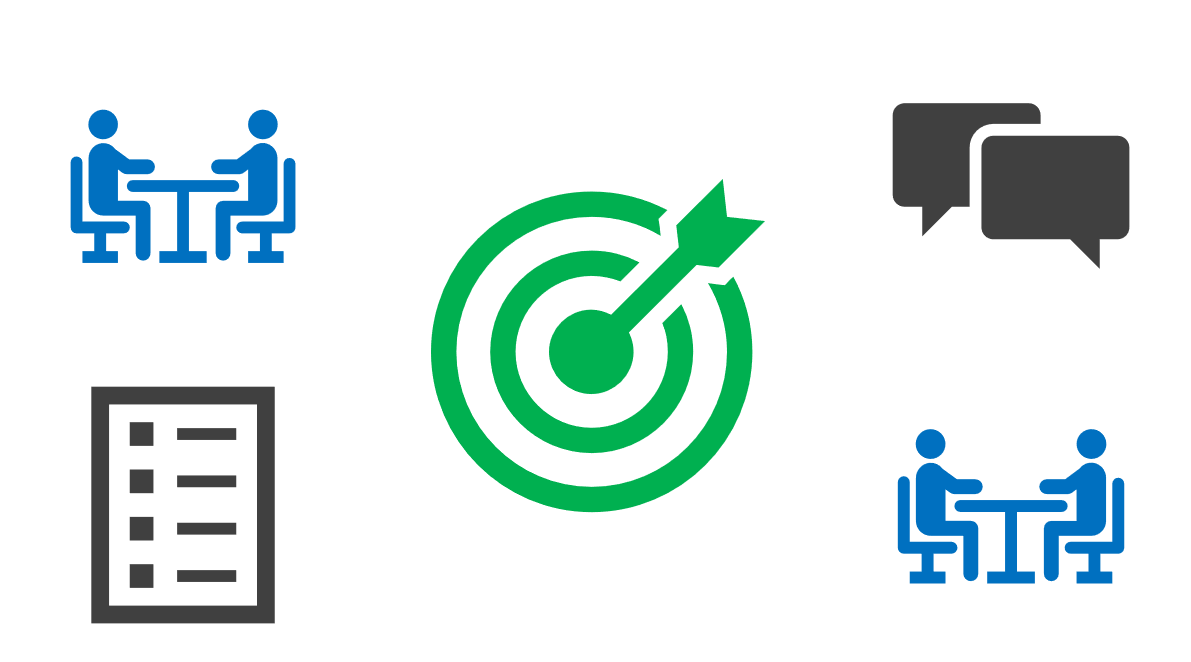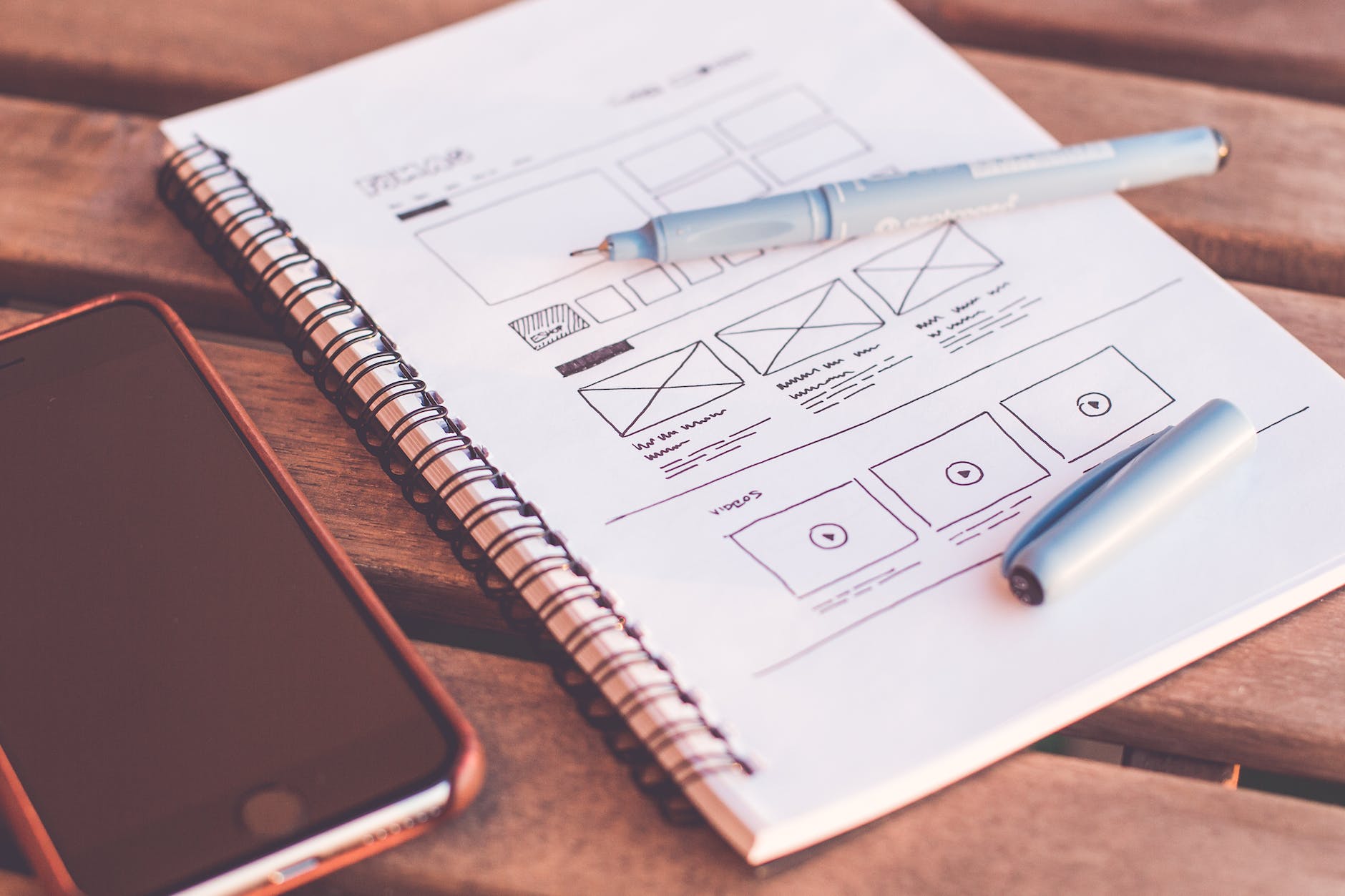How To Design Effective UX Stakeholder Interview Questions – 3 useful tips

Stakeholder interviews are a crucial part of the design process and can provide valuable insights that drive a project’s success. Planning and conducting stakeholder interviews can help a team gain gather insight & a deeper understanding of business goals, user needs, and project objectives.
In this blog, we will discuss the importance of stakeholder interviews, the right questions to ask, and how to analyze the research results to achieve project goals. We will also cover how to prepare for stakeholder interviews and follow-ups, as well as the importance of active listening and open-ended questions.
Why Stakeholder Interviews are Important
Stakeholder interviews play a crucial role in the design process, as they provide valuable information about the project from the perspective of those who will be using it. In this article, we will discuss why stakeholder interviews are important and how they can help designers create successful projects.
Understanding the Project’s Focus and Objectives

One of the main reasons why stakeholder interviews are essential is that they help designers understand the project’s focus and objectives. By gathering information from key stakeholders, designers can learn about the project’s goals, its intended users, and the context in which it will be used. This information is critical in guiding the design process and ensuring that the final product meets the needs of the stakeholders.
Gaining a Deeper Understanding of the Target Audience
Stakeholder interviews also provide designers with an opportunity to gain a deeper understanding of the target audience. By speaking directly to the users, designers can learn about their needs, pain points, and expectations. This information can help designers create user-centered designs that are tailored to the target audience’s specific needs.
Identifying Pain Points and Opportunities
Stakeholder interviews can also help designers identify pain points and opportunities for improvement. By listening to the stakeholders’ feedback, designers can learn about the challenges they face in using the current product or service and identify areas where improvements can be made. This information can then be used to develop solutions that address these pain points and create a better user experience.
Asking The Right Stakeholder Interview Questions

Stakeholder interviews are a valuable tool in any design process. They allow designers to gain a deeper understanding of the project’s goals, target audience, and user needs. By conducting stakeholder interviews, designers can gather valuable insights from key stakeholders, both internal and external, to ensure the project’s success.
Preparing questions before the interview is essential to make the most out of the interview. Open-ended questions are an effective way to gather valuable information, and follow-up questions can help dig deeper and clarify answers. Below are some sample questions to consider:
What are your expectations for this project?
Understanding stakeholders’ expectations is crucial to ensure the project’s success. By asking this question, designers can gain insight into what stakeholders hope to achieve from the project and tailor their approach accordingly.
What pain points are you trying to solve with this project?
Asking about pain points is an effective way to understand the problem the project is trying to solve. By gaining a deeper understanding of stakeholders’ pain points, designers can create a product or service that addresses these issues.
Can you describe your current position and how this project fits into your work?
Understanding stakeholders’ current position and their role in the project can help designers create a product or service that aligns with their needs. This question can also help designers gain insight into how the project fits into stakeholders’ daily work.
How will this project accomplish your business goals?

Understanding stakeholders’ business goals is crucial to ensure that the project aligns with their needs. By gaining insight into their goals, designers can create a product or service that helps stakeholders achieve their business objectives.
What insights do you hope to gain from this research?
Asking about stakeholders’ expectations for insights can help designers tailor their research goals to meet stakeholders’ needs. By understanding what insights stakeholders hope to gain, designers can create a research plan that delivers valuable information and helps achieve project objectives.
In addition to preparing questions, active listening is also essential during stakeholder interviews. Listening carefully to stakeholders’ answers and asking follow-up questions can help designers gather deeper insights and valuable information. It is also important to remember that there are no right or wrong answers during stakeholder interviews. All answers are valuable, and designers should be open to new ideas and perspectives.
Multiple stakeholders may be involved in a project, and it is important to ensure that all stakeholders are included in the interview process. Key stakeholders, both internal and external, should be identified and invited to participate in the interview process. By gathering insights from multiple stakeholders, designers can create a product or service that meets the needs of all stakeholders.
After conducting stakeholder interviews, it is important to gather insights and analyze the data. Designers should review the research results and look for patterns or themes. By analyzing the data, designers can gain a deeper understanding of stakeholders’ needs and create a design project that addresses these needs.

Stakeholder interviews can save time and help designers generate new ideas. By gathering valuable insights and feedback, designers can achieve project objectives and create a final product that meets the needs of all stakeholders. Stakeholder interviews can also have a positive impact on communication and teamwork. By involving stakeholders in the design process, designers can create a focus on success and achieve project goals.
Planning stakeholder interviews: Preparing for the Interview
Planning for stakeholder interviews is an important step in any design process. Effective planning and preparation can ensure that the interviews provide valuable insights into the project and achieve the project objectives. This article outlines some key considerations when planning for stakeholder interviews.
Understand the Project Objectives and Research Goals
Before conducting stakeholder interviews, it’s important to have a clear understanding of the project objectives and research goals. This will help to determine who the key stakeholders are and what information is needed from them. It’s also important to have a clear idea of what the end product or service will be, and how it will meet the needs of the target audience.
Identify the Team Members Involved
It’s important to identify the team members involved in the project and their roles. This will help to determine which stakeholders need to be interviewed and what questions to ask them. The team members can also provide valuable input into the interview process and help to analyze the results.
Listen Carefully to Stakeholders

Stakeholders have unique perspectives and limitations that should be taken into consideration when planning for stakeholder interviews. Listening carefully to stakeholders can help to understand their perspective and limitations, and ensure that the interview questions are relevant and useful. It’s also important to be open to feedback and follow-up questions to clarify answers.
Consider In-Person Interviews
In-person interviews can be extremely important, as they allow for better communication, eye contact, and feedback. This can help to build rapport with stakeholders and ensure that their input is valued. In-person interviews can also provide valuable information that may be missed in phone or email interviews.
Preparing Questions
Preparing questions before the interview is essential to make the most out of the interview. Open-ended questions are an effective way to gather valuable information, and follow-up questions can help to dig deeper and clarify answers. Sample questions to consider include:
- What are your expectations for this project?
- What pain points are you trying to solve with this project?
- Can you describe your current position and how this project fits into your work?
- How will this project accomplish your business goals?
- What insights do you hope to gain from this research?
Analyzing the Results
After conducting the stakeholder interviews, analyzing the results is crucial to identify key insights and keep the project on the right track. The information gathered from the interviews can save time and provide valuable ideas for achieving project objectives. The insights gained can also be used to create a final product that meets stakeholder expectations.
Conclusion
Stakeholder interviews can have a positive impact on a design project’s success. By asking the right questions, preparing effectively, and analyzing the results, designers can gain valuable insights into user needs and expectations. By listening carefully, designers can create a deeper understanding of the project’s focus and objectives, ensuring that the project achieves its goals.
Frequently Asked Questions

What are stakeholder interviews?
Stakeholder interviews are a part of the design research process, where designers and researchers gather insights from key stakeholders (both internal and external) to better understand the project’s focus, objectives, and pain points.
How can stakeholder interviews help my project’s success?
By conducting stakeholder interviews, a team can gain a deeper understanding of the target audience and the product or service they are trying to create. The insights gained can also be used to create a final product that meets stakeholder expectations and achieves project objectives.
How do I prepare for stakeholder interviews?
Planning stakeholder interviews is essential to make the most out of the interview. Before conducting the interview, it’s important to understand the project’s objectives, research goals, and the team members involved. It’s also important to listen carefully to stakeholders to understand their perspective and limitations.
What types of questions should I ask in a stakeholder interview?
Open-ended questions are an effective way to gather valuable information, and follow-up questions can help dig deeper and clarify answers. Sample questions to consider include: What are your expectations for this project? What pain points are you trying to solve with this project? Can you describe your current position and how this project fits into your work?
What if I get wrong answers in a stakeholder interview?
There are no right or wrong answers in a stakeholder interview. The goal is to gather insights and perspectives from multiple stakeholders to create a more complete understanding of the project.
Who should I include in stakeholder interviews?
Key stakeholders, both internal and external, should be included in stakeholder interviews. This includes team members, clients, users, and anyone else who has a vested interest in the project.
What should I do with the research results from stakeholder interviews?
Analyzing the results of stakeholder interviews is crucial to identify key insights and keep the project on the right track. The information gathered from the interviews can save time and provide valuable ideas for achieving project objectives. The insights gained can also be used to create a final product that meets stakeholder expectations.
How can I make stakeholder interviews more effective?
Active listening, follow-up questions, and in-person conversations can all have a positive impact on the effectiveness of stakeholder interviews. By gathering valuable information and understanding the limitations of stakeholders, designers can create a product or service that responds differently to stakeholder needs and achieves project objectives.
Also improve your understanding of product design so you can improve the quality of questions.
How can UX researchers ensure that stakeholder interviews provide valuable insights for user-centered design?

UX researchers can ensure that stakeholder (both internal stakeholders & external stakeholders) interviews provide valuable insights for user-centered design by preparing open-ended questions that focus on understanding the user needs and pain points. They can also encourage active listening and follow-up questions to dig deeper into stakeholder responses.
By involving multiple stakeholders and gathering information on the project’s goals, limitations, and expectations, UX researchers can develop a deeper understanding of the target audience and design solutions that align with user needs.
Can key stakeholder interviews have a positive impact on the UX research or design process?
Yes, stakeholder interviews can have a positive impact on the UX design process by providing valuable information on the target audience, their pain points, and expectations. By listening carefully to stakeholder responses and analyzing the research results, UX designers can gain key insights that inform the design process and help achieve project objectives.
Moreover, stakeholder interviews can save time and resources by identifying potential design issues early on and avoiding wrong answers that do not align with stakeholder expectations.
You might want to check out more from the author below
- Careers
- Job Interviews
- Book summary apps – Headway App vs Blinkist vs getAbstract
- AI Writers / Blogging – Jasper, Writesonic, Article Forge , Copy AI, Anyword,
Author also writes at his Medium site.